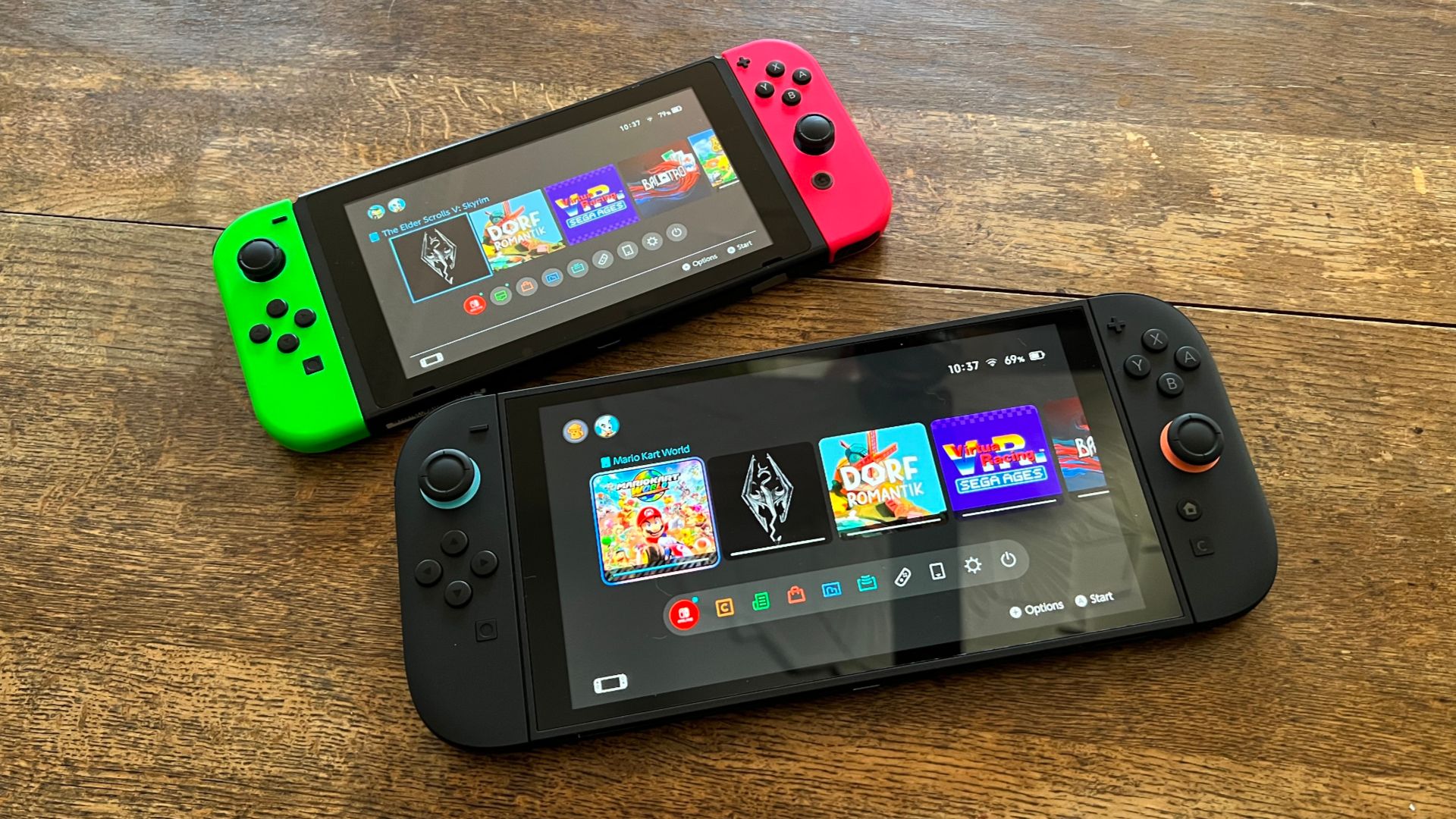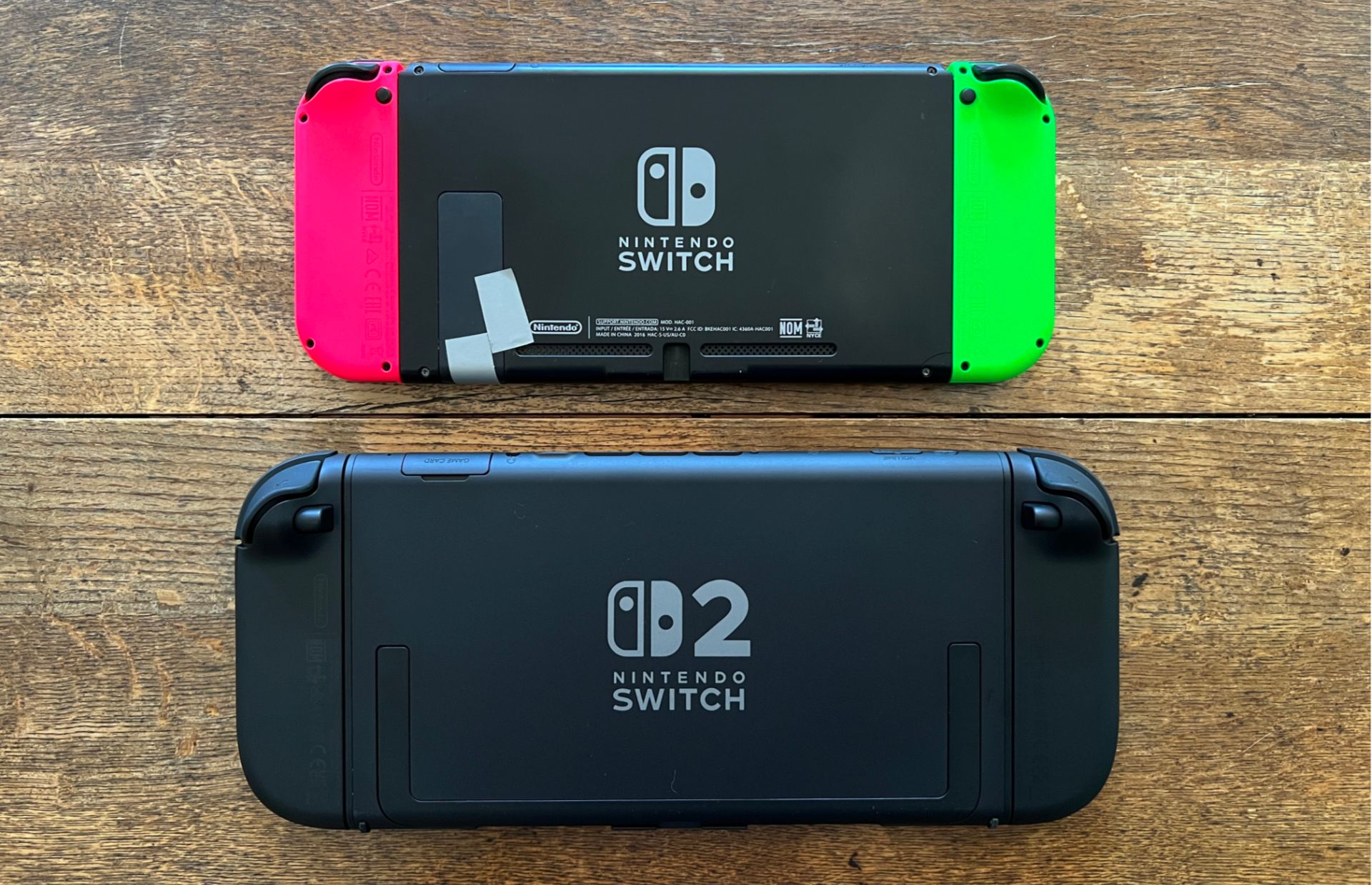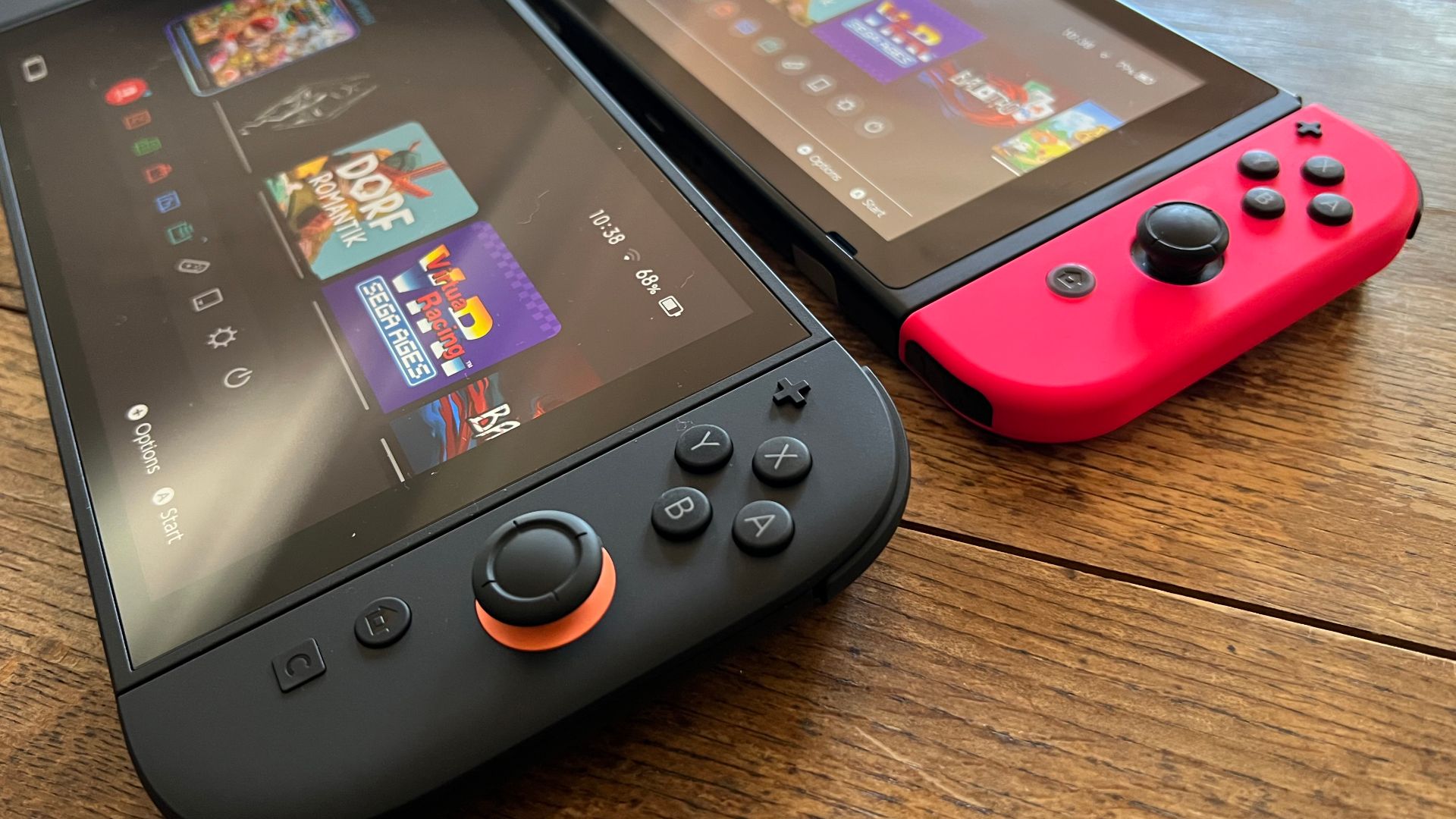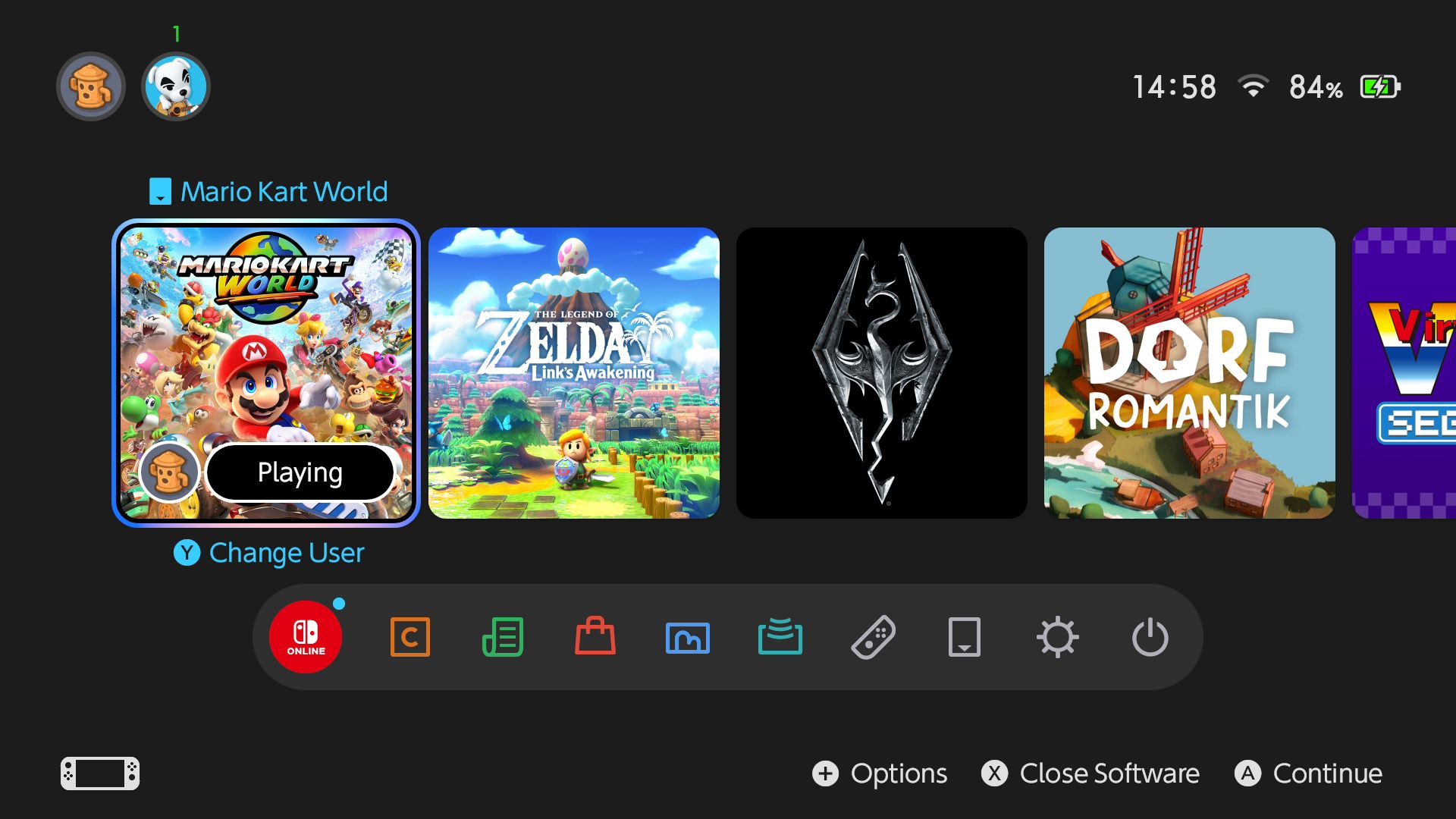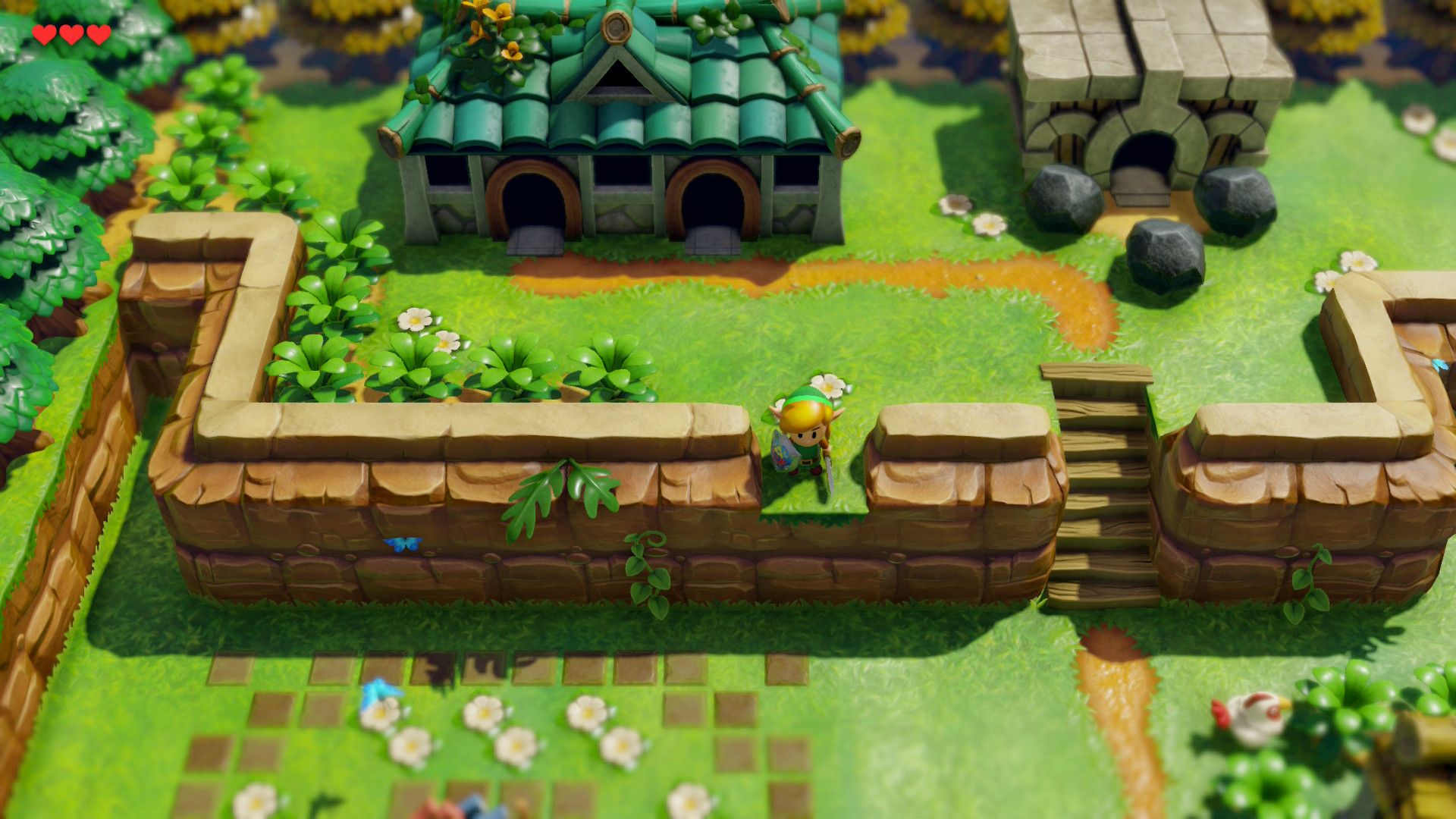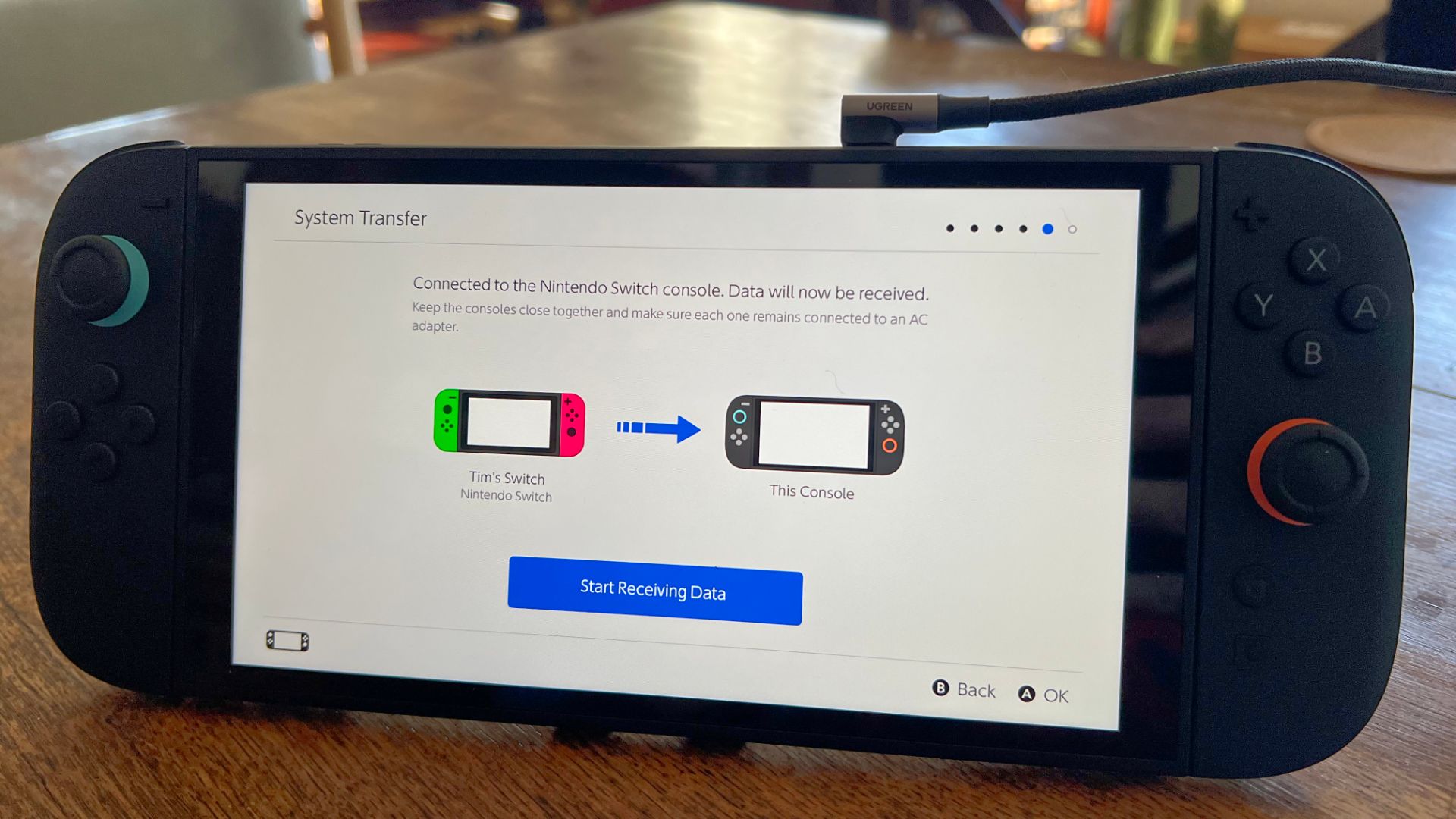The Switch 2 is finally here and after playing with it for a few hours, Nintendo’s follow-up hybrid has already left an impression on me. We have a full review in the works, but let’s dive into the big things that jump out almost immediately.
1
Heavier and Larger, With a Premium Feel
From the second I opened the box and picked up the right Joy-Con, it was clear that “bigger and heavier” was going to be a running theme. That right Joy-Con is about half an ounce heavier (14g), but it’s a weight difference you can feel. The Switch unit itself feels considerably weightier compared to the original, and I’m not even saying that’s a bad thing.
All up, there’s a 4.55oz (129g) difference between the 14.14oz (401g) Switch 1 and the 18.7oz (530g) Switch 2. Not everyone will find this to be jarring, and I’ve got to say that the increase in screen real estate and a bit more grip on the Joy-Cons makes it worth it for me.
Perhaps the most pleasing difference comes from the way the Switch 2 feels. Nintendo has coated the console in a premium-feeling texture that makes it feel like the grown-up version of the original Switch. In terms of size, weight, and hand feel, the Switch 2 makes the original Switch feel like a toy.
2
The Kickstand Is a Serious Improvement
This might be a hot take, but after the short time I’ve spent with the Switch, I’m convinced that the kickstand might be the biggest improvement outside of the beefed-up performance. My launch-day Switch kickstand flapped around hopelessly from to moment I first extended it back in 2017. It was so bad that it’s been taped-down ever since, and never gets used.
The Switch 2 has a hefty kickstand that requires some force to move. Once in place, it doesn’t feel like it’s going anywhere. It’s plastic, like the rest of the Switch construction, but it instills confidence. Being able to extend it out almost all the way lets you put the Switch into weird and wonderful positions, befitting of almost any style of play.
I’ve even been using the kickstand in handheld mode, both to rest the Switch 2 on the table in front of me while in use, and as a support around which I wrap my fingers. This offsets some of the weight and gives you something to hold on to, like some sort of glorified Nintendo Pop Socket. This might be unconventional, but for me, it’s a small comfort considering…
3
The Ergonomics Are Better, But Not Perfect
My biggest concern with the Switch 2 is that Nintendo is repeating past mistakes, at least for those of us with larger hands. From the moment I picked the Switch 2 up, I was confident that I’d be having the same problems this time around as I had last time—albeit to a lesser degree.
Bigger Joy-Cons offer some relief. The extra size means you get considerably more palm coverage, which is especially noticeable when using the left analog stick. The tips of the sticks are also larger, though I wish Nintendo had opted for a concave design. That said, my thumbs still feel cramped compared to something like the Steam Deck and I find myself straining to find some way of holding on to the Switch that won’t result in some sort of hand cramp.
I’ll know for sure after I’ve used the console for an extended period, but it looks like a grip attachment like the Satisfye ZenGrip 2 or dbrand’s Project Killswitch will be necessary for longer handheld sessions. That said, you can always just use the Switch 2 in docked mode with your existing Switch accessories.
4
The Speakers Are a Big Step Up
After taking a moment to compare some video captures I’d taken on the original Switch with the Switch 2 (since the data transfer feature copies everything across), I can confidently say that the Switch 2 sounds a lot better than the original.
There’s finally some real depth to the sound, and the tinniness of the puny speakers on the original console is a thing of the past. I played a noisy action sequence I grabbed after defeating a tough boss in Metroid Dread and what sounded like a muddy wall of sound on the original console has clarity and definition on the Switch 2. It’s not going to vibrate the desk, but voices and engine sounds have an element of bass that was almost entirely missing before.
These are captures that were generated by the original Switch hardware and have since been compressed, so I’m expecting things to get even better with native Switch 2 titles that take advantage of the 3D audio capabilities of the new console. These are on full display via the chilled-out music that plays when you set up the console for the first time, and the effect is impressive.
5
Nintendo Fixed the UI and eShop
From the moment the row of icons zoom onto the screen as you complete the Switch 2 setup, you’ll notice that things feel noticeably more zippy than they did on the original Switch (even at launch). It very much feels like the menu takes advantage of the Switch 2’s 120Hz display capability since everything feels so modern and smooth. It gives me hope that there’s enough overhead for Nintendo to release some pretty themes this time around.
This extends to the eShop, which has been overhauled and now has virtually no loading time whatsoever. Navigating between the different sections—including a new “For You” recommendations engine that the Switch so sorely needed—is silky smooth.
You can even pick from Switch 2 or original Switch listings in the charts, and there’s a clearly displayed upgrade path for any enhanced editions you might want to buy. Let’s hope that the eShop remains this performant throughout the Switch 2’s lifespan.
6
You Can Put the Joy-Cons on Upside Down
Like its predecessor, the main Switch 2 unit is just a nondescript black tablet. When you’re looking at it head-on, it looks the same regardless of which way you hold it. So of course I put the Joy-Cons on the wrong way around the first time I held it.
Thankfully, unlike the issues many users had with the rails used by the original hardware, fixing your mistake is a simple case of pressing the release buttons and flipping things around. And no, the console doesn’t actually scream at you for doing this. In fact, the controller continues to function as you’d expect (with inverted controls).
7
Enhanced Switch Games Are a Big Deal
Even though I got my hands on the Mario Kart World bundle, the first game I booted up was The Legend of Zelda: Link’s Awakening, one of the 12 Nintendo Switch games to receive a free enhanced patch at launch. I did this so I could compare the same game on the old console and the new one, and I was blown away.
Not only are the performance hitches that plagued the game nowhere to be seen, but the colors are also more vibrant, there’s far less shimmering on the textures, and the whole thing runs at an encouragingly consistent frame rate (at least, the area I booted up). As someone who shied away from certain games on the Switch due to hardware frustrations (Pokémon Legends: Arceus being a notable example), I’m genuinely excited to go back and experience these games in their best possible versions.
I’m now more accepting of Nintendo’s argument that some of these upgrades are worth a premium, even if the extra $10 for Tears of the Kingdom and Breath of the Wild stings. A slow trickle of free and paid version updates over the next year or two could reinvigorate so many Nintendo titles, and make the hardware upgrade seriously tempting for existing Switch owners.
8
A Bigger, Brighter, and Better Display
After the disappointing news that Nintendo decided against an OLED display, likely to keep costs down, it’s a relief to note that the Switch 2’s LCD is a solid upgrade over the original Switch. I can’t compare this directly to the OLED model, but compared to my launch day model the differences are night and day.
The Switch 2’s display has a pixel density of 279 PPI, an improvement of about 42 PPI over the original Switch. This is evident in everything from the UI elements to the overall quality of rendered objects in games. It looks fantastic, with far better color reproduction compared with the original launch day model.
The biggest drawback is the lack of an etched anti-glare coating, as seen on Valve’s high-end Steam Deck OLED, but the display thankfully gets bright enough to use in bright conditions. I stood outside in the midday sun and could still clearly see what was happening on a bright Mario Kart World course. Darker environments aren’t so great, but it’s still a big step up from the original Switch display.
If this is how good Nintendo’s LCD Switch 2 looks, you can bet that the inevitable OLED revision will be even more impressive.
Though Nintendo has taken a “more of the same” approach with its latest console, early impressions confirm what many of us suspected: if you liked the Switch, you’ll love the Switch 2. Stay tuned for our full review.
On the fence about buying Nintendo’s latest console? Here’s how to decide if the Switch 2 is for you.

